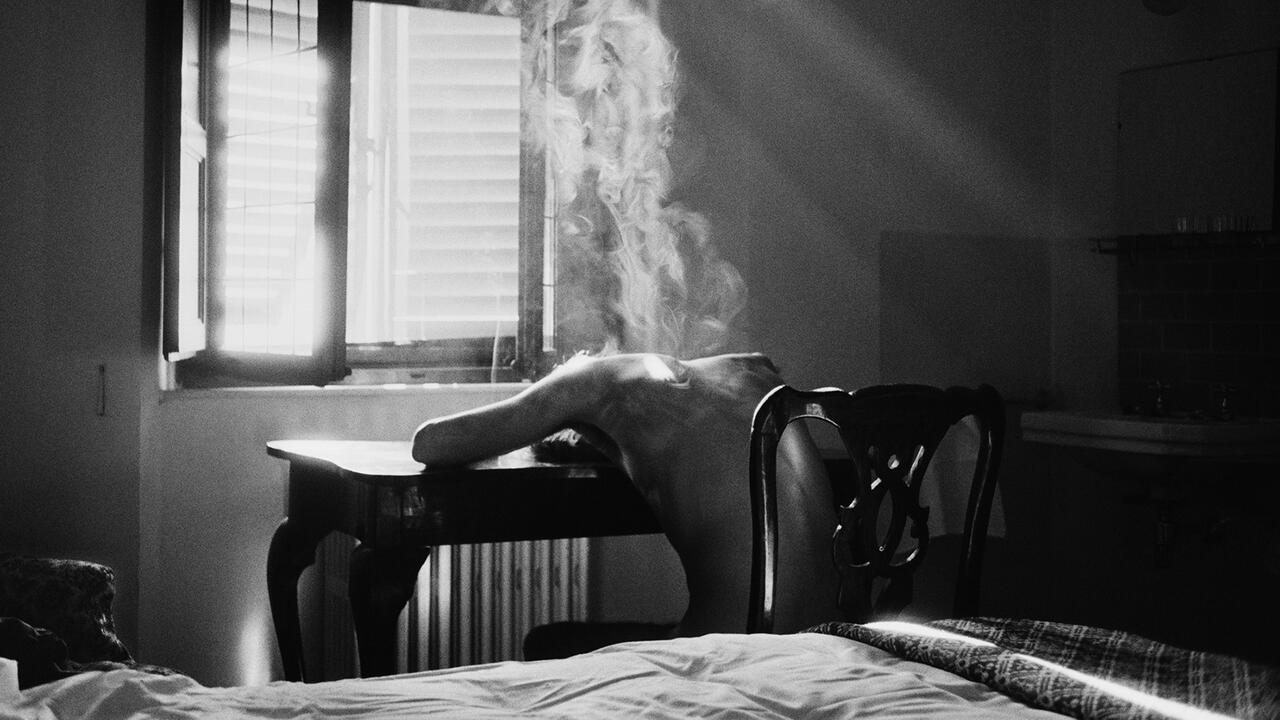Snap Judgements
International Center of Photography, New York, USA
International Center of Photography, New York, USA
From all-too-familiar but perennially shocking news photos depicting victims of war, disease and famine to Kenyan-based photographer Peter Beard’s cheerfully exoticizing, morally repellent photo-collages beloved by the fashion set, Africa’s relationship to photography remains fraught in the global media and the Western imagination. Okwui Enwezor, curator of this survey of recent work by African photographers, cites such examples in his catalogue essay, writing that ‘ No other cultural landscape has had a more problematic association with the photographic medium: its apparatus, various industries, orders of knowledge, and hierarchies of power.’ Yet the camera has become a dazzlingly versatile critical tool for post-colonial African artists. Like many Chinese photographers, these artists are exploring such themes as personal and collective history, social and political upheaval, and the intersection between the body and photographic media. However, unlike last year’s dynamic exhibition ‘Between Past and Future: New Photo-graphy and Video from China’, ‘Snap Judgments’ presented anything but a neat package.
Enwezor acknowledged the chall-enges at hand but aimed to highlight new African photography that is strongly analytical and often anti-photogenic in its approach. Sometimes this means resisting the tourist's gaze. Egyptian artist Maha Maamoun’s subtly postcard-like, digitally manipulated images of Cairo in her series ‘Domestic Tourism’ (2005) show couples chatting in a park under unnaturally incandescent, lemon-yellow streetlamps or joyous seaside bathers in a scene that has been reassembled to distance and de-familiarize. Theo Eshetu, who is Ethiopian but was born in London and works in Rome, contributed the pulsing, hypnotic triple-image DVD projection Trip to Mount Ziqualla, Ethiopia (2005); documenting an annual pilgrimage to a monastery near an inactive volcano. It is intimate yet phantasmagoric, reflecting Eshetu’s situation as both insider and outsider. Scored to scraps of New York-style Hip-hop, vocal ululations and Western sacred music, shots of beautiful priests in jewel-toned finery toting gold-embroidered umbrellas, boombox-playing kids, piles of holy cards, Isuzu trucks and dancing participants produce an irreducibly layered view of the event.
In striking contrast to the breathtakingly sublime images of the African natural world so common in the West, landscapes by these artists are keenly observed and unsentimental. Hala Elkoussy’s matter-of-fact, wall-sized images of developments rising on the urban periphery alongside stretches of barren terrain suggest that change is a dominant feature of such marginal areas. Other works obliquely equate landscapes and interiors with individual and collective memory. Zarina Bhimji, for instance, creates arrestingly detailed large colour images that appear reticent at first glance but resonate through their sensitive lighting and their subject matter: crystal chandeliers piled in a corner of an abandoned official building, shelves of a police cabinet labelled with ancient masking tape, a view from inside a cramped room whose barred window is draped with underwear. The knowledge that Bhimji, born in Uganda and living in London, was expelled from the country with her family and other South Asians in 1972 by Idi Amin, helps explain their haunting quality.
Diasporic perspectives such as Bhimji’s abound. Global aesthetic influences are also at play, though it is not always clear where. A cursory glance at the wall labels revealed that many of the artists are peripatetic and cosmopolitan: born in Beirut, living and working in Cairo; born in Nigeria, living and working in London; born in Paris, living and working in Paris and Tangier; and so on. But many works are rooted in local contexts, such as Romouald Hazoumé’s sculptural images of men smuggling petrol in bright, bulbous containers from Nigeria into the Republic of Benin; Michael Tsegaye’s textured interiors of homes in Addis Ababa; or James Muriaki’s romantically blurred night-time shots of mini-vans in Nairobi called matatus, which are often dangerously overcrowded but are expressively decorated and equipped with music.
Among the most memorable were works by artists from north Africa – less often associated with art from the continent by Westerners – including Omar D.’s classical black and white portraits of Algerians, some withered by age or blinded, or Yto Barrada’s restrained series documenting the Moroccans who live in a state of limbo near the Strait of Gibraltar and the constant temptation of illegal passage. Women artists were also well represented. In his essay Enwezor mentions that some works were commissioned, and given his acknowledgment his ‘perspective is to be read as insistently partial’, it would have been interesting to know which were created for this context. But if the show’s title was a bit glib, his selections were the opposite.
























